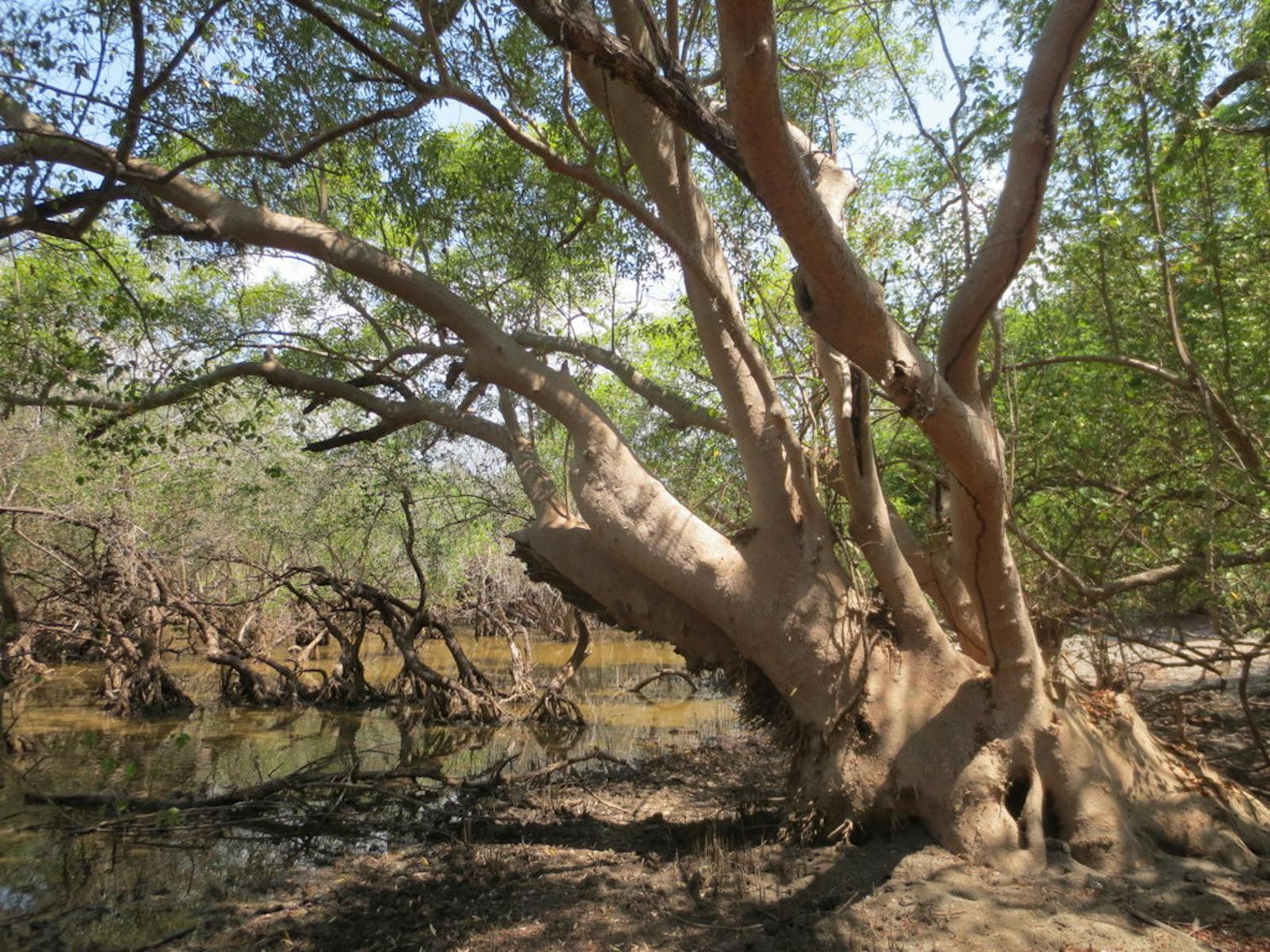Indus River Delta-Arabian Sea Mangroves
The ecoregion’s land area is provided in units of 1,000 hectares. The conservation target is the Global Safety Net (GSN1) area for the given ecoregion. The protection level indicates the percentage of the GSN goal that is currently protected on a scale of 0-10. N/A means data is not available at this time.
Bioregion: Indian Dry Deciduous Forests (IM3), North Indomalayan Deserts & Scrub Forest (IM4)
Realm: Indomalaya
Ecoregion Size (1000 ha):
602
Ecoregion ID:
320
Conservation Target:
30%
Protection Level:
9
States: Pakistan, India, United Arab Emirates, Saudi Arabia, Oman, Qatar, Bahrain, Yemen
The Indus River Delta–Arabian Sea Mangroves provides critical habitat for numerous species of fishes and shellfishes, especially as a spawning ground and nursery for the larvae and juveniles. This ecoregion is in several disjunct patches that line the shorelines of the Indus River Delta and the Gulfs of Kutch and Khambhat.
The ecoregion is in an area with climatic extremes, where the temperatures can fluctuate from near-freezing in the winter to a sweltering 50°C during the summer. The July to September monsoon brings 100 to 500 mm of rainfall. Because of the hot and dry conditions, evaporation rates are very high. The rivers that flow through evaporating mudflats make the mangrove sloughs exceptionally saline.

The flagship species of the Indus River Delta-Arabian Sea Mangroves ecoregion is the Dalmatian pelican. Image credit: Creative Commons
Mangrove vegetation, in general, is not as biologically diverse as other terrestrial broadleaf forests. But they are structurally quite complex, with a dense canopy and an undergrowth of seedlings and saplings from the canopy trees. Mangrove trees have unique adaptations to grow in the saline and anoxic soils. They have evolved a root system where some roots, called pneumatophores, grow upwards and out of the water instead of into the soil, and are able to take up oxygen from the air. Other roots that grow from higher up along the trunk act as prop roots to stabilize the trees against wave surges and tidal currents on the muddy, unstable ground. Special filtration systems in the roots and leaves remove salt from the water that is taken up by the trees.
The fruits of mangroves are also adapted to reproduction in the estuarine: their seeds actually begin to germinate while the fruit is still attached to the tree. When the main root begins to grow, the fruit drops into the water and floats upright until the tide goes out. The roots then establish themselves into the mud and the plant begins to grow.

Flower of Avicennia marina. Image credit: Creative Commons
The mangrove community in this ecoregion is dominated by a single species, Avicennia marina, also known as grey or white mangrove. It can tolerate very high salinity level, much more so than other mangrove species. Some of the other species associated with the grey mangroves are species of Rhizophora and Acanthus, but they are usually found closer to feeder creeks where the water is less saline. Grey mangroves are commonly used as insect repellents, plant dyes, tannins, and timber. It was also used to treat small pox lesions in Persian folk medicine.
An exhaustive list of mammal species inhabiting these mangroves is not available. However, fishing cats have been sighted here, even though this species was thought to be extinct in Pakistan. Other mid-sized predators such as golden jackals and otters are also reported here. About 125 species of birds are known from these mangroves, including threatened species such as the greater flamingo and Dalmatian pelican. These mangroves are also an important flyover and staging area for tens of thousands of migratory birds that arrive from Siberia in the winter.
Although about a third of the ecoregion is now formally protected, there are several threats originated outside the ecoregion that impact its ecological integrity. Industrial pollution from the city of Karachi, oil spills and discharges from the ships that anchor in the city’s harbor, and increased salinity levels caused by flow diversions in the Indus River affect the delicately balanced mangrove ecosystems. Threats from within the ecoregion includes tree-cutting by seasonal fishers that live in the mangrove forests. Very little mangrove forests now remain outside the existing protected areas system.
Thus, the priority conservation recommendations are to: 1) protect the remaining patches; 2) control and mitigate the impact of external threats, especially those related to pollution; and 3) identify potential sites for restoration of mangrove habitats.
Citations
1. Amjad, S., Rasheed, M.A. and Baig, M.A., 2016. Mangrove Ecosystem Services: Indus Delta (PQA), Sindh. Journal of Geoscience and Environment Protection, 4(07), p.179.
2. Wikramanayake, E, E. Dinerstein, et al. 2002. Terrestrial Ecoregions of the Indo-Pacific: A Conservation Assessment. Island Press.




